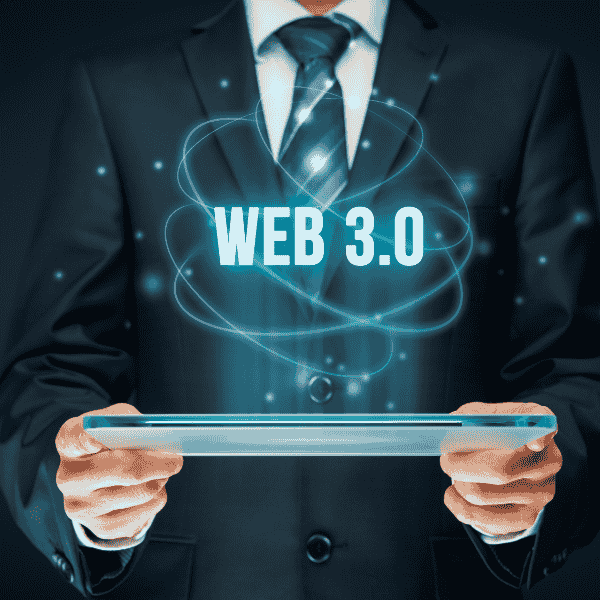Defining Blockchain Technology
Cryptocurrencies like Bitcoin are built on blockchain technology, but their uses go far beyond virtual money. Consider a blockchain as a digital ledger or database. Each block in this chain-structured ledger provides a list of transactions. Blockchain is distinctive due to its decentralized structure.
Think of it this way: In conventional record-keeping, a central organization, such as a bank, is relied upon to keep a ledger current. This ledger is shared among a network of computers known as nodes using blockchain technology. The ledger is shared by every member of the network, and any updates or transactions are added to a new block. A block is extremely difficult to change or tamper with after it has been added. The system is exceptionally safe and transparent thanks to this immutability, which ensures faith in it.
Benefits of Blockchain Adoption
Blockchain adoption offers a plethora of advantages for businesses and organizations. It’s like fortifying the walls of your castle to protect your treasure from marauders. Here are some key benefits:
Enhanced Security: To secure data, blockchain employs cutting-edge cryptography methods. A chain that is challenging to break is created because each block includes a cryptographic reference to the one before it. This makes it extremely resilient to fraud and hacking.
Reduced Fraud: Blockchain’s transparency and immutability make it challenging for malicious parties to modify data or carry out fraudulent actions. Transactions are securely recorded in a way that cannot be altered.
Streamlined Processes: Through the use of smart contracts, blockchain may automate and streamline complicated procedures. These contracts self-execute according to predetermined rules. Smart contracts eliminate the need for middlemen by automatically carrying out actions when certain criteria are met.
Cost Savings: Businesses can save operating costs by getting rid of middlemen and automating procedures. Direct business transactions between parties can reduce costs and delays.
Understanding Blockchain Technology
Let’s dissect blockchain to better comprehend it. Each block in the chain contains information, and this information is not limited to financial transactions but can represent other sorts of information as well. It may include ownership information, product histories, or even voting records.
Consider being a blacksmith and producing a magnificent sword. You engrave your mark on it to ensure its provenance and history. This permanent mark serves as a reminder that you are the author and cannot be removed or changed. Similar to your mark on a sword, data in a block is like that; once it’s in the blockchain, it’s there forever. Due to its immutability and transparency, blockchain is a trusted technology for uses other than financial transactions.
Use Cases of Blockchain Technology
Blockchain’s versatility extends across industries. It’s like a Swiss Army knife, offering solutions to a wide array of problems. Here are some notable use cases:
Supply Chain Management: Imagine following a product from its manufacturing location to the consumer. A blockchain records every step, from production to shipping, ensuring authenticity and promoting transparency.
Healthcare: Only authorized parties can access securely stored medical records on a blockchain. Patients now have more authority over their data while still maintaining privacy.
Finance: By making international transactions faster and more secure, blockchain lessens the need for middlemen like banks. Additionally, it creates possibilities for financial inclusion and microtransactions.
Voting Systems: By offering a transparent and safe platform, blockchain can completely transform voting. Election integrity is ensured by the tamper-proof recording of votes.
Intellectual Property: By registering their intellectual property on a blockchain, authors, artists, and other creators can safeguard it. This guarantees that their work is acknowledged and adequately compensated.
Real Estate: By securely storing ownership information and transaction history, blockchain streamlines real estate transactions. It lessens fraud in real estate transactions.
Overcoming the Challenges of Adopting Blockchain
While the benefits of blockchain adoption are compelling, the journey isn’t without challenges. These challenges are like storms on the horizon, but with careful planning, they can be navigated:
Integration Issues: It can be difficult to integrate blockchain technology into current systems. To prevent disruptions, it’s imperative to establish a defined integration strategy.
Resistance to Change: Stakeholders and employees can be wary about using blockchain. To overcome this reluctance, effective communication and training are necessary.
Regulatory Concerns: Blockchain is used in many jurisdictions where it is illegal. To avoid legal problems, regulations must be understood and followed.
Scalability: Scalability is a problem as more transactions are added to the blockchain. It’s crucial to pick a blockchain platform that can support expansion.
Security Risks: Although blockchain technology is secure, applications or infrastructure may have flaws. To defend against potential dangers, strong security measures are required.
Developing a Blockchain Strategy
Creating a concise and well-defined blockchain strategy will serve as your guide during this trip. Your company needs to create a roadmap for adopting blockchain technology, much like a captain plots his course before setting sail. This is how you do it:
Set Clear Objectives: Establish your goals first. What are your goals for blockchain technology? Your objectives will direct your strategy, whether they are lowering operational expenses, enhancing security, or increasing transparency.
Assess Risks: Determine any potential dangers and difficulties unique to your sector and organization. This covers technological integration, regulatory compliance, and potential stakeholder resistance.
Allocate Resources: The adoption of blockchain technology involves a commitment of expertise, resources, and time. Make a plan for how you’ll use these resources to make sure the implementation goes well.
Timeline and Milestones: Make a timeline with distinct checkpoints. This makes it easier to monitor development and guarantees that your blockchain endeavor stays on track.
Building the Right Team
Similar to a ship’s crew, the correct team is necessary for your blockchain adventure. Bring together a team of professionals with a range of expertise who can manage the challenges of blockchain implementation:
Developers: The creators of your blockchain solutions are skilled blockchain developers. They develop your blockchain’s infrastructure and smart contracts.
Legal Advisors: Blockchain frequently takes place in a legal murk. Legal professionals may guide you through regulatory hurdles and guarantee compliance.
Project Managers: Your blockchain project is maintained on course by a competent project manager. They guarantee that milestones are met and coordinate the activities of the various team members.
Business Analysts: These experts serve as a link between technical and commercial concerns. They assist in defining use cases and guarantee that blockchain complies with your corporate objectives.
Selecting the Right Blockchain Platform
It’s important to choose the ideal blockchain platform, just as you would while embarking on a sea voyage. When choosing, keep the following things in mind:
Scalability: Make sure the platform can support the number of transactions your company needs. For long-term success, scalability is crucial.
Consensus Mechanisms: Consensus mechanisms used by different blockchains vary, including Proof of Work (PoW) and Proof of Stake (PoS). Recognize these mechanisms and select the one that best serves your objectives.
Community Support: A strong and vibrant community can offer helpful information and assistance. It’s like having traveling companions who are also sailors and can give advice and support.
Interoperability: Think about whether the blockchain platform can integrate easily with other platforms and tools that your company utilizes.
Data Migration and Integration
Existing data migration to the blockchain is comparable to transporting delicate goods. Here’s how to make the transfer seamless:
Data Assessment: Assess the data you want to move first. How is it formatted? Is it organized or unorganized? It’s essential to understand your data.
Data Cleansing: Make sure your data is clean and formatted to be compatible with the blockchain before migrating. This process aids in avoiding data inaccuracies and discrepancies.
Testing: Perform extensive testing before the move itself. Determine and fix any problems that may emerge during the procedure.
Backup and Recovery: In the event of data loss or migration issues, always have backup plans. Procedures for data recovery are necessary to protect important information.
Smart Contracts and Automation
The foundation of many blockchain applications is smart contracts. They obediently carry out your directions like devoted robots. Here is how they function:
Define Rules: Self-executing contracts with set rules are known as smart contracts. These guidelines specify how and when actions are carried out.
Automation: The contract automatically carries out the agreed-upon activities once the conditions set forth in it have been satisfied. This automation eliminates the need for middlemen, saving money and time.
Transparency: Since smart contracts are stored on the blockchain, their execution is both visible and unchangeable.
Security Considerations
When it comes to blockchain technology, security comes first. Even though blockchain is renowned for its built-in security features, further security measures are still required to protect your money and data. Consider security as erecting solid defenses around your fortress:
Cryptography: To secure data, blockchain largely relies on cryptographic methods. Make careful to use strong cryptographic techniques to protect sensitive data.
Access Control: Limit who can read, write, or execute transactions on the blockchain by implementing rigorous access controls. This stops tampering and unauthorized access.
Key Management: Manage cryptographic keys safely so they may be used to sign and validate transactions. Assets may be lost if private keys are lost or stolen.
Regular Audits: To find gaps and holes in your blockchain architecture, do frequent security audits and penetration tests.
Incident Response Plan: Create a thorough incident response strategy to handle security breaches quickly. In the event of an assault, time is of important for damage containment and mitigation.
Scalability and Performance
Your blockchain infrastructure should expand along with your business. Like a road widening to accommodate more traffic, scalability is essential to ensure that the blockchain can manage increased transactions efficiently:
Consensus Mechanisms: As your network expands, think about transitioning to more scalable consensus techniques. Examples of scalable and energy-efficient Proof of Work (PoW) alternatives include Proof of Stake (PoS) and Delegated Proof of Stake (DPoS).
Layer 2 Solutions: Investigate layer 2 alternatives to offload some of the transaction burden from the main blockchain, such as sidechains and state channels. These have a big impact on scaling.
Continuous Monitoring: Monitor network performance carefully. Tools for monitoring can assist in locating bottlenecks and areas that require improvement.
Pilot Projects and Testing
Run trial projects and testing before fully incorporating blockchain into your business processes. Consider it a dress rehearsal for a big performance:
Start Small: Start with a small-scale blockchain project to determine its viability and resolve any concerns without putting the operations of your entire company at risk.
User Feedback: During the pilot phase, gather user and stakeholder feedback. You can adjust your blockchain solutions based on this feedback to better suit their needs.
Iterative Approach: Accept an iterative development process. Continually enhance your blockchain applications based on user input and usage in the real world.
Training and Education
To make sure that your workforce is ready to use blockchain technology, education is essential. Your anchor in choppy waters is knowledge, which keeps everyone on the same page:
Blockchain Workshops: To familiarize your team with blockchain principles, jargon, and best practices, plan workshops and training sessions.
Certifications: Team members should be encouraged to get blockchain-related certifications. These certificates attest to their knowledge and dedication to staying current.
Stay Informed: The field of blockchain is quickly developing. Encourage your employees to read industry journals, attend conferences, and participate in webinars to remain current on the newest advances and trends.
Legal and Regulatory Compliance
Getting around the legal system is essential for using blockchain technology. Make sure your blockchain complies with current laws and accounts for changes in the future:
Legal Consultation: Look for legal advice with knowledge of cryptocurrencies and blockchain rules. They can offer advice on the regulations for compliance that apply only to your country.
Data Protection: Follow data protection regulations, such as GDPR in Europe or HIPAA in the US, if your blockchain contains sensitive or personal data.
Taxation: Recognise how blockchain transactions, especially cryptocurrency trades, affect taxes. In order to avoid legal problems, reporting and compliance are crucial.
Lobby for Regulation: In some circumstances, it may be advantageous to actively shape blockchain-related legislation to make sure they are advantageous to your company.
Monitoring and Maintenance
As with a ship navigating the seas, your blockchain system requires vigilant oversight and routine maintenance once it is up and running:
Continuous Monitoring: Use specialized software and tools to continuously track the functionality and performance of your blockchain network. This enables you to identify irregularities and take fast action.
Node Management: Ensure that the nodes in your network are operating correctly. The integrity of the network can be compromised by node failures or irregularities.
Software Updates: Keep your blockchain platform’s software patched and up to date. These updates frequently include bug fixes and security upgrades.
Data Backups: Create regular backups of your blockchain data to guard against data loss due to unforeseen events. To maintain business continuity, establish data recovery strategies.
Scalability Planning: Plan for the scalability of your blockchain network as your company grows. As the amount of transactions rises, determine whether more nodes or resources are required.
Case Studies
Real-world case studies can offer priceless information about effective blockchain implementations. Here are some illustrations to help you believe in blockchain technology:
Walmart’s Food Traceability: To trace the path taken by food supplies from suppliers to retailers, Walmart deployed blockchain. This increased traceability, decreased outbreaks of foodborne illness, and increased consumer confidence.
Ethereum’s Smart Contracts: The creation of smart contracts and decentralized applications (DApps) has been made possible by Ethereum’s blockchain. These agreements automate a number of procedures, including supply chain management and financing.
IBM’s Blockchain in Supply Chain: IBM has collaborated with businesses like Maersk to develop blockchain-based supply chain management solutions. As a result, efficiency and transparency have grown.
Luxury Goods Authentication: Blockchain has been investigated by companies like Louis Vuitton and Gucci to confirm the authenticity of premium items. The origin and validity of a customer’s purchase can now be verified.
These case studies demonstrate the various uses and advantages of blockchain across several sectors. They provide examples of how blockchain might improve various business operations’ efficiency, security, and transparency.
Future Trends in Blockchain Adoption
The blockchain landscape is continuously evolving. Staying informed about future trends is crucial to remain competitive:
Interoperability: Future blockchain networks are likely to prioritize interoperability, enabling easy data sharing and communication between various blockchains.
Tokenization of Assets: It is anticipated that more assets, like as real estate, works of art, and intellectual property, will be tokenized and exchanged on blockchain platforms.
Decentralized Finance (DeFi): DeFi is still expanding and now provides decentralized financial services like lending, borrowing, and trading without the use of conventional intermediaries.
NFTs (Non-Fungible Tokens): NFTs have grown in popularity as a means of displaying distinctive digital goods, such as works of art, music, and collectibles. This trend is predicted to continue growing.
Sustainability Initiatives: Blockchain initiatives are concentrating on energy-efficient consensus processes to minimize their carbon impact as environmental concerns spread.
Adopting and adjusting to these trends can provide your business a competitive edge in the rapidly changing digital environment and position it as a blockchain technology pioneer.
Conclusion
In conclusion, blockchain technology is a disruptive force that has the power to completely reshape businesses and organizations in a wide range of sectors. You can successfully embrace and deploy blockchain technology by following the steps mentioned in this article, from comprehending the fundamentals to addressing security issues.
Keep in mind that blockchain is not a universally applicable solution. Adapt your strategy to the particular demands, objectives, and legal requirements of your organization. With the proper team, a clear plan, and a dedication to ongoing learning and development, embrace blockchain.
Keep an eye out for new trends and opportunities as you explore the fascinating world of blockchain. Blockchain is the technology of the future, and by utilizing it, your business may reach new heights of innovation, efficiency, and trust.
FAQs
What is the role of cryptography in blockchain security?
Cryptography in blockchain ensures the confidentiality and integrity of data. It secures transactions and data stored on the blockchain.
How can blockchain enhance transparency in supply chain management?
Blockchain provides a transparent and immutable ledger that allows stakeholders to trace the origin and journey of products, reducing fraud and ensuring authenticity.
What is the significance of scalability in blockchain adoption?
Scalability ensures that a blockchain network can handle increased transaction volumes as an organization grows, preventing bottlenecks and delays.
How can organizations stay updated on the latest blockchain trends?
Organizations can stay informed by attending blockchain conferences, following industry publications, and participating in blockchain communities and forums.
What are some future applications of blockchain technology in addition to those mentioned in the article?
Future applications include blockchain in healthcare for secure patient data management, blockchain-based identity verification, and the use of blockchain in the gaming industry for virtual asset ownership and trading.






